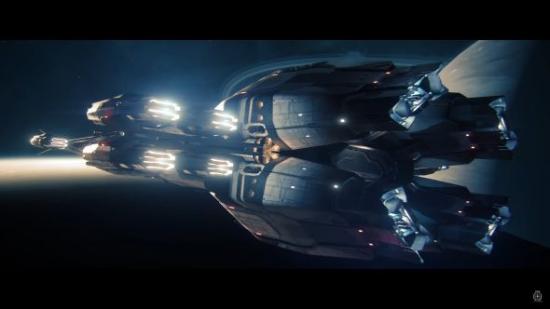Update June 11, 2017: As we reported last week, Cloud Imperium are currently in the process of reworking Star Citizen’s ships to make them more complex. They now have one of the game’s ships fully transferred over to the new system, dubbed Item 2.0.
The developers chose the Origin M50 Interceptor as the first ship, because it was the most simple to convert. It also means they can use what they learned here and deploy that knowledge when trying to convert bigger, more complex ships across to the new system.
If you’re a citizen of the stars, you might like our list of the best space games.
You can see all the progress they’ve made in the video above, with the work paving the way for other, more exciting features, such as ejections.
Elsewhere, the character team have added extra suits of armour to the armoury. There’s now a functioning medium female marine, as well as a heavy male outlaw.
Original Story June 5, 2017: I’ve never heard someone say the word “systems” as much as I just did watching the latest Star Citizen ‘Around the Verse’ video. This one’s all about Item 2.0, which reworks ships so they logically work as a separate list of components.
In real terms, these changes mean that lights will turn off if you power down a room’s modules, or perhaps the atmosphere will be sucked out of a room as you enter. The game will even be able to tell when you’re flying in a planet’s atmosphere, which will in turn affect fuel consumption.
Cockpits will be more tactile, too, with players in control of everything the ship does, from powering up to turning on the engines. The same will go for engineering stations, which will allow players to divert power between systems using a new interface.
This process involves every development team working on the game. Even things as simple as doors are needing to be rebuilt to compensate for the new systems, which means the artists and physics teams need to get involved again.
“Coordinating these teams is a real challenge, as you have 400 people who need to be aware of what’s happening,” says producer Ashram Kain. “The hardest part of coordinating all these teams isn’t necessarily tracking the tasks or individual work on any given person, but making sure all the teams are aware of what’s happening and what’s coming down the pipeline. We don’t want to break something and prevent one of the teams from being able to work.”
They also need to make sure each bit of work is done in time to pass to the AI team, so they can work in NPC behaviour for anyone aboard player ships. Then there’s the unpredictable element – what will the player bring on the ship and how will those items react with the changes?
It doesn’t sound like the most efficient way to make a game, but you can’t knock its ambition. Check it out in the video above.
